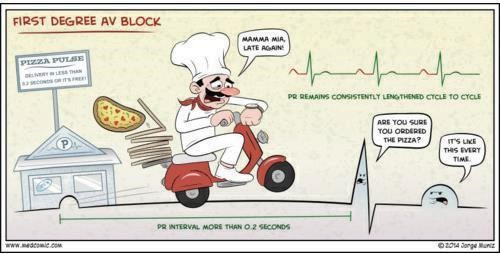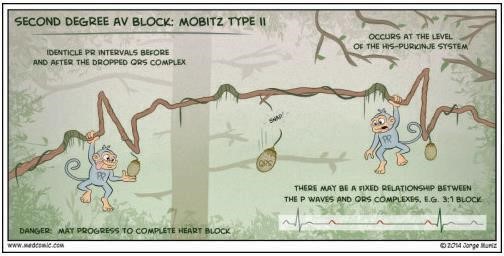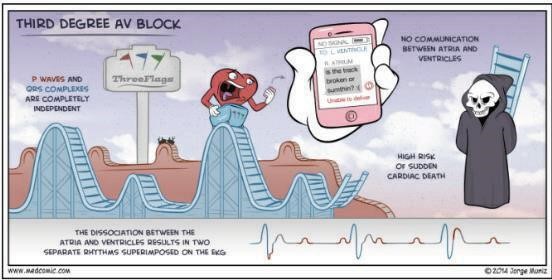
Heart blocks are classified based on the degree to which signals from the atria reach your heart’s main pumping chambers (ventricles).
Think of the AV node like a boom gate in the middle of a road that controls traffic. When working normally, it will allow each car to pass through from point A to point V . . . pun intended! However, an issue with the boom gate will result in a roadblock. The same applies to the AV node not allowing the electrical impulse to pass through normally.
The severity of this roadblock determines the degree of the heart block. It could range from merely causing some delayed traffic through the boom gate (first degree), to some traffic getting through and some traffic getting blocked (second degree), or no traffic getting through at all (third degree).

This is the most complex form of heart block and the most diagnostically challenging. There are four categories of second-degree heart block. Type I (often referred to as Wenckebach), Type II, 2-to-1 heart block, and high-grade heart block.


This is the most serious type of heart block. It is also called a complete heart block.
